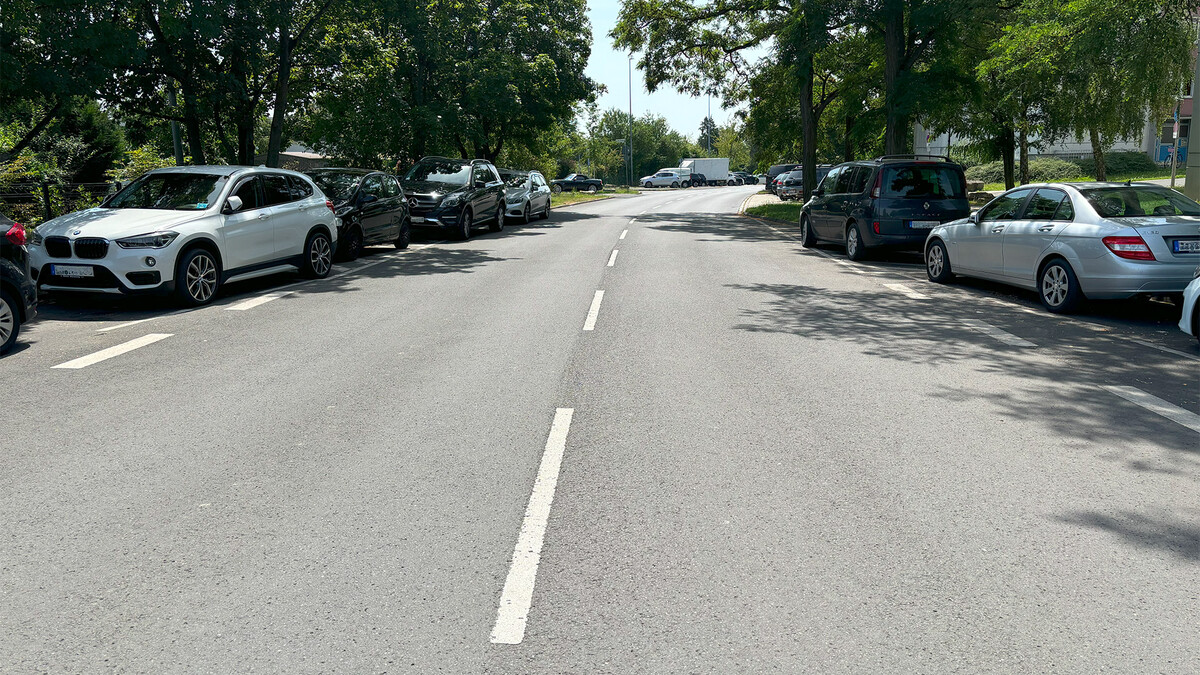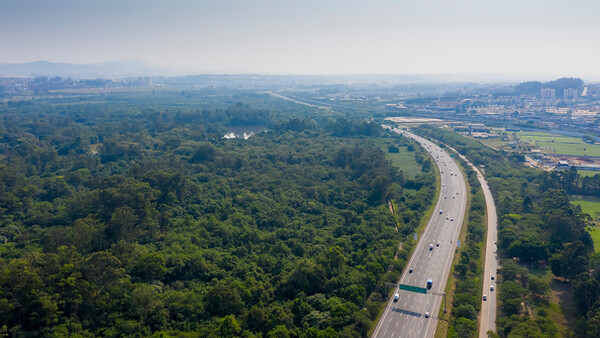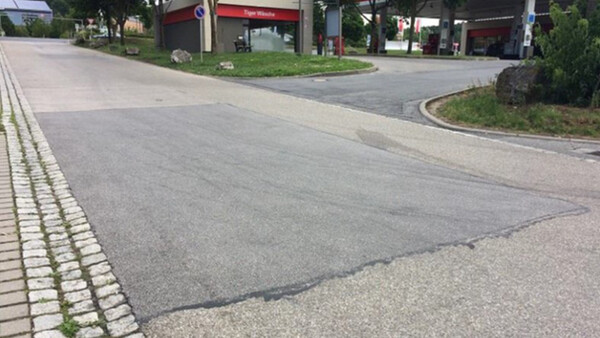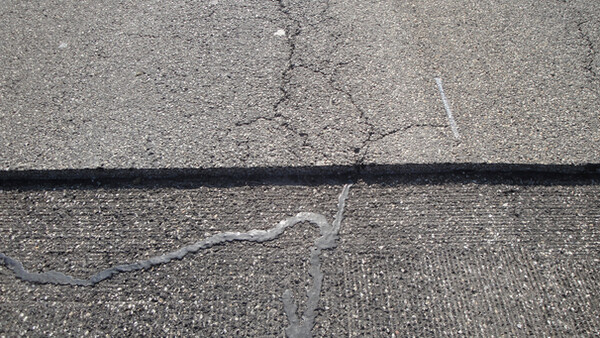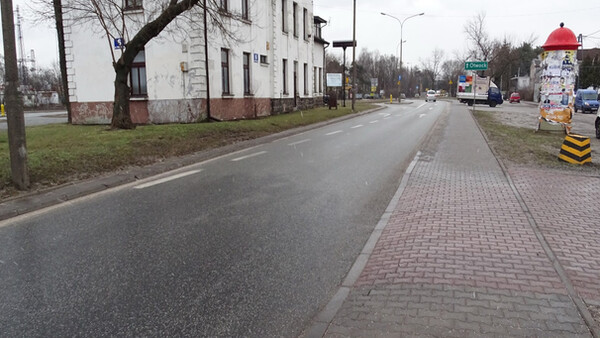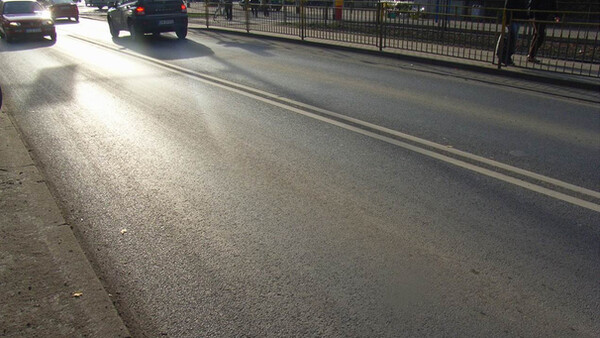Asphalt reinforcement Straßburger Ring, Würzburg
Asphalt reinforcement is currently one of the most exciting and most discussed topics in road construction. Since its widespread use in Germany in the early 2000s, there are still many new insights and experiences to be gained. It is therefore all the more impressive that we now have the opportunity to observe the potential of this innovative construction method over a long period of time - and to do so on the basis of a classic pavement rehabilitation project.
On this page
- Topic
- Asphalt reinforcement in road construction
- Object
- Straßburger Ring
- Location
- Straßburger Ring, 97084 Würzburg
- City
- Würzburg
- State
- Bavaria
- Country
- Germany
- Date
System
Project Description
Situation
In 2006, the city of Würzburg renovated the Straßburger Ring with an economical fibreglass reinforcement to test the new technology and check the condition of the road.
In the 1960s, a residential neighbourhood for 20,000 people was planned. In 1966, the ‘Heuchelhofgesellschaft’ founded an urban planning competition, which was won by the architect Gerhard Dittrich, who designed the first construction phase ‘H1’ (Straßburger Ring).
The Straßburger Ring was designed and dimensioned around 1970. Until 2006, there were no known repair measures and the road showed severe damage.
Problem
The drill cores showed penetrating cracks in all asphalt layers. The road surface was badly damaged, with alligator cracking and an open centre seam. There was clear rutting, which impaired driving comfort. This damage led to the planning of a repair with asphalt reinforcement over approx. 2,000 m².
Solution
After milling the old wearing course, the underlying base course showed clear cracks. Without asphalt reinforcement, these cracks would have quickly penetrated into the new wearing course and caused recurring damage.
Asphalt has a low tensile strength, making it difficult to absorb cracks from lower layers. Due to repeated loading by traffic, existing cracks penetrate into the renewed wearing course, at a rate of approx. 1 cm/year.
To prevent this, the asphalt reinforcement grid S&P Glasphalt® G was installed under the new wearing course. This reinforcement absorbs and distributes tensile forces to prevent cracking, so that the pavement remains resilient and damage-free in the long term.
Installation in 2006
The installation was carried out on the milled binder course, and the S&P Glasphalt® G asphalt reinforcement was applied onto the cured and dried bitumen emulsion for layer bonding (300 g/m²; C60 BP4-S). The 3.5 cm thick wearing course was then paved in one day without any problems. Quality assurance tests were carried out and quickly approved with no issues.
Usage and service life
A classic wearing course renewal on a cracked base of this type typically has a service life of around 5 to 7 years. In the years following the rehabilitation, road inspections were carried out to document and check the condition of the road - with no signs of needing intervention to date.
Maintenance and sustainability
The use of S&P asphalt reinforcement makes it possible to meet maintenance quotas and cope with growing demand for road repair. This solves the rehabilitation backlog and ensures sustainable solutions for roads with high and low loads.
S&P asphalt reinforcement grids are of high technical quality and can be milled and recycled. Two comprehensive tests have confirmed the recyclability of our products - proof of our environmentally friendly approach.
Project tracking over 18 years
The first inspection took place in 2008, with no damage to the surface. In 2015, there was no significant difference compared to 2008: no cracks, ruts or areas in need of repair. In 2018, the city of Würzburg once again confirmed the good condition of the surface.
In 2024,18 years after the wearing course was laid, the road is virtually damage-free. Individual cracks do not impair driving comfort and the road is fit for purpose.
CO2 Savings
Before the implementation of S&P asphalt reinforcement grids, the wearing course on this road had a service life of just 5 to 7 years. Based on this data, we performed a comparative analysis using Global Warming Potential (GWP) values from the national OEKOBAUDAT database. With the introduction of the S&P reinforcement solution, CO₂-equivalent emissions from material use alone were reduced by over 70% across an 18-year period. This calculation accounts solely for materials; total emissions savings would be even higher when factoring in additional aspects such as milling, transportation, and general site operations associated with repeated maintenance cycles.
Conclusion: We are shaping the future of road maintenance with innovative, ecologically and economically sensible solutions - efficient, sustainable and future-orientated.
You can find the details in the pictures in our image gallery.
Material
S&P Glasphalt® G
